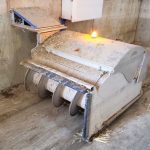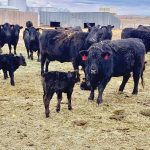
Supply a proper feeding program for replacement heifers
It takes proper management and feed investment to raise calves to the milking age

Preventing frothy bloat on early spring pasture
A couple of treatments are available, but management practices can avoid the problem

Include high-quality alfalfa in a balanced dairy ration
Dairy Corner: Test for nitrates if the crop was produced under high-moisture conditions

Dairy cattle can be picky eaters
Dairy Corner: Keep a properly mixed ration ‘pushed up’ in front of the cows throughout the day

A balanced mineral-vitamin program is a good investment
The key is to be raising healthy animals in good condition and ready for breeding

Getting bulls prepped for breeding season
Bulls in optimum body condition have high sperm count and sex drive at breeding

First-calf heifers need to be prepared for rebreeding
They need to calve in good condition and then be kept in good condition as they also continue to grow and nurse a calf

Feed enough potassium in dairy lactation diets
Dairy Corner: There’s a balancing act between there being too much or not enough K

Dairy cows need effective forage fibre
The Dairy Corner: Cud-chewing, or lack thereof, could be an indicator of several problems due to a low fibre diet

Consider a two-stage dry cow feeding program
Dairy Corner with Peter Vitti: Meeting all of the dry cow’s nutritional needs goes a long way toward success


